An Experimental Study on Progressive and Reverse Fluxes of Sediments with Fine Fractions in Wave Motion
Abstract
:1. Introduction
- Models describing suspended sediment;
- Models describing bedload transport regime;
- Two- and three-layer models; i.e., describing both suspended and bedload transport; while a possible third layer describes the transition area between these layers and corresponds to the saltation layer.
2. Materials and Methods
2.1. Sediment Transport during the Wave Crest and Trough
- Integrated fluxes outgoing from the control area with the intensity of transporting sediment grains to adjacent control areas, in both directions. It is the part of integrated total flux with the intensity of , which in the experiment described in this paper was retained in the traps on both sides of the control area. It was postulated [37] that the movement of a packet of grains zk in sediment fluxes follows horizontal projection trajectories of different but equally likely (with probability p = 1/K) lengths Δxk, where:
- Integrated fluxes returning to the control area with the intensity of transporting suspended sediment within the boundary layer of δm thickness, defined according to the multilayer model [36,38]. These fluxes are the result of phase lags between water and sediment. These effects cause grains outgoing from the control area in the crest and trough phases to return and be retained in the control area by fluxes outgoing from the trough and crest phases;
- Integrated return fluxes and of sediments suspended high above the bottom and also above the boundary layer (). Fluxes and result from the suspension of a large number of very fine sediment grain fractions above the bed, as a consequence of vertical sorting of the granulometrically heterogeneous sediment.
2.2. Aim and Scope of the Study
2.3. Experimental Investigation
2.3.1. Experimental Setup
2.3.2. PIV System
2.3.3. Sediment Transport and Grain Distribution Measurements
- Sandy with a very high proportion of fine fractions (d50 < 0.20 mm; sand D: grain content di < 0.20 mm = 97%);
- Sandy with low content of fine fractions (d50 ≥ 0.20 mm; grain content di < 0.20 mm: sand A = 6%, B = 10.5%, C = 26%).
3. Results and Discussion
3.1. Theoretical Investigations
3.1.1. Sediment Transport during the Wave Crest and Trough Phase
3.1.2. Grain Size Distributions of Transported Sediments
3.2. Free Stream Velocity Measurements
3.3. PIV Measurements
- 1.
- As would be expected, the flux within the boundary layer (thickness outgoing from the computational area and directed to the trap (positive values) reached higher values than the absolute values of the flux returning to the computational area (Table 6). However, the more very fine fractions in the bottom, the more the outgoing and returning fluxes balanced each other. This was understandable, because more very fine fractions in the fluxes , , and meant a larger (after they were mixed) depth-averaged return flux. As a result, the balancing of the outgoing and returning fluxes occurred closer to the bottom, at the boundary of the near-wall layer (Figure 1). As a result, high above the bottom, the returning fluxes were larger than those outgoing the control area (Figure 1). This was especially visible in cases of stronger bottom impacts, which was confirmed by observations of (Table 6) in the area high above the near-wall layer (), where the proportion of suspended fine and very fine fractions in this flux was dominant. It is worth noting that the above effect occurred in the crest phase, when it could be expected that the orbital velocities in the returning flux were smaller than in the outgoing flux . In addition, the higher proportion of very fine fractions in the fluxes resulting from their elevation above the boundary layer may imply their absence from the bottom, thus causing an increase in the bottom roughness and a decrease in the flux entering the trap;
- 2.
- In the trough phase, the fluxes reached absolute values higher than fluxes in the crest phase (Table 6). The above observation seemed to be understandable due to the increased presence of very fine fractions in the computational area caused by the returning flux . However, the increased differences between the absolute values of fluxes ; i.e., those outgoing from the computational area and directed to the trap (negative values) and those returning, clearly indicated a significant contribution in the flux . This suggested a significant increase in by expanding the flux at the expense of . On the other hand, the increased amount of very fine fractions in the trough phase implied an increase in the average postdepth concentration of these fractions, and in effect, by forming an envelope around coarse grains, they facilitated their transport. As a result, an increase in the amount of coarse fractions (di ≥ 0.20 mm) was to be expected in the flux entering the trap A. The above effects were so strong (Table 5) that even in areas located higher up the bottom (), but under stronger conditions, the absolute values of the flux i.e., outgoing from the computational area and directed to the trap, remained larger than the returning flux , as the latter was formed only by the fluxes and .
3.4. Correction Factors for Sediment Fluxes
3.5. Calculated Sediment Transport versus Measurements
3.6. Calculated Grain Size Distributions versus Measurements
4. Conclusions
- Total sediment transport with very fine and fine (di < 0.20 mm) and coarse (di ≥ 0.20 mm) fractions, in both the crest and trough, consisted of the following components:
- ●
- Transport of outgoing sediment fluxes from the control area that were deposited in adjacent control areas in both directions. The movement of grains in these fluxes followed horizontal projection trajectories of different but equally probable lengths;
- ●
- Transport of fine sediment fluxes returning to the initial area in a suspended state. These fluxes were the result of phase lags between the water and sediment. Grains outgoing from the control area in the crest phase returned and were retained in this area. Then they flowed out in the trough as a flux that was deposited in the area adjacent to the trough side;
- ●
- Flux transports of very fine sediments returning to the initial area in the crest and trough phases in a suspended state—high above the bottom. These fluxes resulted from vertical sorting of the granulometrically heterogeneous sediment.
- An increase in the amount of very fine fractions in the return flow outgoing in the crest phase meant a loss in these fractions in the bottom, and thus an increase in the bottom roughness and grain movement resistance. As a result, the transport of coarse fractions outgoing in the flux from the control area and feeding the adjacent area decreased, and the transport of fine and very fine fractions decreased significantly due to the return of these fractions to the initial area. In the situation in which there were no very fine fractions in the bottom, only a loss in fine fractions was observed in the adjacent area due to the phase-lag effect.
- An increase in the amount of very fine fractions in the return flow outgoing in the trough phase caused an increase in the depth-averaged concentration of these fractions, and as a result, they formed an envelope around coarse grains, making the transport of these fractions easier, and significantly increasing the transport. In the case of a small amount of very fine fractions in the bottom, the above effect of these fractions on the transport of coarse grains was negligibly small, and the total flux outgoing in the trough was deposited in the adjacent area.
- The results of experimental investigations were compared with the results of theoretical analysis based on the three-layer model of Kaczmarek et al. 2022. As this model did not take into account the above-mentioned effects related to the presence of fine and very fine fractions, a modification of this model with the above-mentioned effects was proposed. Transport calculations were conducted separately for fluxes of very fine and fine fractions, coarse fractions, and total fractions outgoing in the crest and trough phase from the initial area and deposited in adjacent control areas. The consistency of the modified model with the measurements was achieved within plus/minus a factor of 2 of the measurements, as shown by plotted agreement lines. In addition, calculations of the granulometric distributions of sediment retained in the adjacent areas from the crest and trough were also carried out. Again, calculations were conducted separately for fine and very fine fractions, coarse fractions, and their sum. The calculated granulometric compositions were compared with measurements, and satisfactory agreement was obtained.
- Modification of the Kaczmarek et al. 2022 model was carried out based on four coefficients that corrected for fluxes of fine and very fine fractions and coarse fractions that fed adjacent control areas from the crest and trough. For sands with a relatively low content of fine fractions (d50 ≥ 0.20 mm), it was possible to find a functional relationship of these coefficients with a coefficient of determination R2 > 0.80. For sands with a dominant amount of fine and very fine fractions (d50 < 0.20 mm), such a relationship could not be obtained, suggesting the need for further experimental studies in this area.
- An interpretation of the present laboratory experimental results in the natural situations could be easily made, as the free stream velocities were defined as the surface-wave-induced orbital velocity at the edge of the wave boundary layer, and the sediment transport was the result of the coexistence of wave motion asymmetry and compensatory return current. The present analysis of deposition from traps on the sides is highly recommended for engineering practices in coastal zone because the determination of sediment transport during the wave crest and wave trough is needed.
Author Contributions
Funding
Institutional Review Board Statement
Informed Consent Statement
Data Availability Statement
Conflicts of Interest
References
- Ouillon, S. Why and How Do We Study Sediment Transport? Focus on Coastal Zones and Ongoing Methods. Water 2018, 10, 390. [Google Scholar] [CrossRef]
- Ribberink, J.S. Bed-load transport for steady flows and unsteady oscillatory flows. Coast. Eng. 1998, 34, 59–82. [Google Scholar] [CrossRef]
- Dibajnia, M.; Watanabe, A. Transport rate under irregular sheet flow conditions. Coast. Eng. 1998, 35, 167–183. [Google Scholar] [CrossRef]
- Van Rijn, L.C. Unified View of Sediment Transport by Currents and Waves. I: Initiation of Motion, Bed Roughness, and Bed-Load Transport. J. Hydraul. Eng. 2007, 133, 649–667. [Google Scholar] [CrossRef] [Green Version]
- Van Rijn, L.C. Unified View of Sediment Transport by Currents and Waves. II: Suspended Transport. J. Hydraul. Eng. 2007, 133, 668–689. [Google Scholar] [CrossRef]
- Van Rijn, L.C. Unified View of Sediment Transport by Currents and Waves. III: Graded Beds. J. Hydraul. Eng. 2007, 133, 761–775. [Google Scholar] [CrossRef] [Green Version]
- Van Rijn, L.C.; Walstra, D.J.R.; van Ormondt, M. Unified view of sediment transport by currents and waves. IV: Application of morphodynamic model. J. Hydraul. Eng. 2007, 133, 776–793. [Google Scholar] [CrossRef]
- Kaczmarek, L.M.; Sawczyński, S.; Biegowski, J. Hydrodynamic Equilibrium for Sediment Transport and Bed Response to Wave Motion. Acta Geophys. 2015, 63, 486–513. [Google Scholar] [CrossRef] [Green Version]
- Cannata, G.; Palleschi, F.; Iele, B.; Cioffi, F. A Three-Dimensional Numerical Study of Wave Induced Currents in the Cetraro Harbour Coastal Area (Italy). Water 2020, 12, 935. [Google Scholar] [CrossRef] [Green Version]
- Zheng, J.H. Depth-dependent expression of obliquely incident wave induced radiation stress. Prog. Nat. Sci. 2007, 17, 1067–1073. [Google Scholar]
- Zheng, J.; Mase, H.; Demirbilek, Z.; Lin, L. Implementation and evaluation of alternative wave breaking formulas in a coastal spectral wave model. Ocean Eng. 2008, 35, 1090–1101. [Google Scholar] [CrossRef]
- Chen, X.W.; Zheng, J.H.; Zhang, C.; Yang, X. Evaluation of diffraction predictability in two phase averaged wave models. China Ocean. Eng. 2010, 24, 235–244. [Google Scholar]
- Ribberink, J.S.; Al-Salem, A.A. Sediment transport in oscillatory boundary layers in cases of rippled beds and sheet flow. J. Geophys. Res. Earth Surf. 1994, 99, 12707–12727. [Google Scholar] [CrossRef]
- Ribberink, J.S.; Chen, Z. Sediment transport of fine sand under asymmetric oscillatory flow. Delft Hydraul. Rep. H 1993, 840, part VII. [Google Scholar]
- Dohmen-Janssen, C.; Kroekenstoel, D.F.; Hassan, W.N.; Ribberink, J.S. Phase lags in oscillatory sheet flow: Experiments and bed load modelling. Coast. Eng. 2002, 46, 61–87. [Google Scholar] [CrossRef]
- Malarkey, J.; Davies, A.; Li, Z. A simple model of unsteady sheet-flow sediment transport. Coast. Eng. 2003, 48, 171–188. [Google Scholar] [CrossRef]
- Van der Werf, J.J. Sand Transport over Rippled Beds in Oscillatory Flow. Ph.D. Thesis, University of Twente, Enschede, The Netherlands, 2006. [Google Scholar]
- Briganti, R.; Dodd, N.; Incelli, G.; Kikkert, G. Numerical modelling of the flow and bed evolution of a single bore-driven swash event on a coarse sand beach. Coast. Eng. 2018, 142, 62–76. [Google Scholar] [CrossRef]
- Hsu, T.-J.; Jenkins, J.T.; Liu, P.L.-F. On two-phase sediment transport: Sheet flow of massive particles. Proc. R. Soc. A Math. Phys. Eng. Sci. 2004, 460, 2223–2250. [Google Scholar] [CrossRef]
- Da Silva, P.A.; Temperville, A.; Santos, F.S. Sand transport under combined current and wave conditions: A semi-unsteady, practical model. Coast. Eng. 2006, 53, 897–913. [Google Scholar] [CrossRef] [Green Version]
- Cheng, Z.; Hsu, T.-J.; Calantoni, J. SedFoam: A multi-dimensional Eulerian two-phase model for sediment transport and its application to momentary bed failure. Coast. Eng. 2017, 119, 32–50. [Google Scholar] [CrossRef] [Green Version]
- Ribberink, J.S.; Al-Salem, A.A. Sheet flow and suspension of sand in oscillatory boundary layers. Coast. Eng. 1995, 25, 205–225. [Google Scholar] [CrossRef]
- O’Donoghue, T.; Wright, S. Concentrations in oscillatory sheet flow for well sorted and graded sands. Coast. Eng. 2004, 50, 117–138. [Google Scholar] [CrossRef]
- O’Donoghue, T.; Wright, S. Flow tunnel measurements of velocities and sand flux in oscillatory sheet flow for well-sorted and graded sands. Coast. Eng. 2004, 51, 1163–1184. [Google Scholar] [CrossRef]
- Rankin, K.L.; Hires, R.I. Laboratory measurement of bottom shear stress on a movable bed. J. Geophys. Res. Earth Surf. 2000, 105, 17011–17019. [Google Scholar] [CrossRef] [Green Version]
- Jiang, Z.; Baldock, T.E. Direct bed shear measurements under loose bed swash flows. Coast. Eng. 2015, 100, 67–76. [Google Scholar] [CrossRef]
- King, D.B. Studies in Oscillatory Flow Bedload Sediment Transport. Ph.D. Thesis, University of California, San Diego, CA, USA, 1991. [Google Scholar]
- Hassan, W.N.; Ribberink, J.S. Transport processes of uniform and mixed sands in oscillatory sheet flow. Coast. Eng. 2005, 52, 745–770. [Google Scholar] [CrossRef]
- Dohmen-Janssen, C.M.; Hanes, D.M. Sheet flow dynamics under monochromatic nonbreaking waves. J. Geophys. Res. Earth Surf. 2002, 107, 13-1–13-21. [Google Scholar] [CrossRef]
- O’Donoghue, T.; Ribberink, J.S. Measurements of sheet flow transport in acceleration-skewed oscillatory flow and comparison with practical formulations. Coast. Eng. 2010, 57, 331–342. [Google Scholar] [CrossRef]
- Schretlen, J.L.M. Sand Transport under Full-Scale Progressive Surface Waves. Ph.D. Thesis, University of Twente, Enschede, The Netherlands, 2012. [Google Scholar]
- Cloin, B. Gradation Effects on Sediment Transport in Oscillatory Sheet-Flow. Master’s Thesis, Delft University of Technology (TU Delft), Delft, The Netherlands, 1998. [Google Scholar]
- Xia, C.; Tian, H. A Quasi-Single-Phase Model for Debris Flows Incorporating Non-Newtonian Fluid Behavior. Water 2022, 14, 1369. [Google Scholar] [CrossRef]
- Kaczmarek, L.M.; Biegowski, J.; Sobczak, Ł. Modeling of Sediment Transport in Steady Flow over Mobile Granular Bed. J. Hydraul. Eng. 2019, 145, 04019009. [Google Scholar] [CrossRef]
- Kaczmarek, L.M. Numerical Calculations with a Multi-layer Model of Mixed Sand Transport Against Measurements in Wave Motion and Steady Flow. Rocz. Ochr. Srodowiska 2021, 23, 629–641. [Google Scholar] [CrossRef]
- Kaczmarek, L.M.; Biegowski, J.; Sobczak, Ł. Modeling of Sediment Transport with a Mobile Mixed-Sand Bed in Wave Motion. J. Hydraul. Eng. 2022, 148, 04021054. [Google Scholar] [CrossRef]
- Kaczmarek, L.M.; Sawczyński, S.; Biegowski, J. An Equilibrium Transport Formula for Modeling Sedimentation of Dredged Channels. Coast. Eng. J. 2017, 59, 1750015-1–1750015-35. [Google Scholar] [CrossRef]
- Kaczmarek, L.M.; Biegowski, J.; Ostrowski, R. Modeling cross-shore intensive sand transport and changes of grain size dis-tribution versus field data. Costal Eng. 2004, 51, 501–529. [Google Scholar] [CrossRef]
- Adrian, R.J. Particle imaging techniques for experimental fluid mechanics. Annu. Rev. Fluid Mech. 1991, 23, 261–304. [Google Scholar] [CrossRef]
- Adrian, R.J. Twenty years of particle image velocimetry. Exp. Fluids 2005, 39, 159–169. [Google Scholar] [CrossRef]
- Paprota, M. Experimental study on wave-current structure around a pneumatic breakwater. J. Hydro-Environ. Res. 2017, 17, 8–17. [Google Scholar] [CrossRef]
- Paprota, M. Particle Image Velocimetry Measurements of Standing Wave Kinematics in Vicinity of a Rigid Vertical Wall. Instrum. Exp. Tech. 2019, 62, 277–282. [Google Scholar] [CrossRef]
- Biegowski, J.; Paprota, M.; Sulisz, W. Particle Image Velocimetry Measurements of Flow Over an Ogee-Type Weir in a Hydraulic Flume. Int. J. Civ. Eng. 2020, 18, 1451–1462. [Google Scholar] [CrossRef]
- Paprota, M. Experimental Study on Spatial Variation of Mass Transport Induced by Surface Waves Generated in a Finite-Depth Laboratory Flume. J. Phys. Oceanogr. 2020, 50, 3501–3511. [Google Scholar] [CrossRef]
- Malarkey, J.; Davies, A. Free-stream velocity descriptions under waves with skewness and asymmetry. Coast. Eng. 2012, 68, 78–95. [Google Scholar] [CrossRef]
- Stachurska, B.; Staroszczyk, R. Effect of surface wave skewness on near-bed sediment transport velocity. Cont. Shelf Res. 2021, 229, 104549. [Google Scholar] [CrossRef]
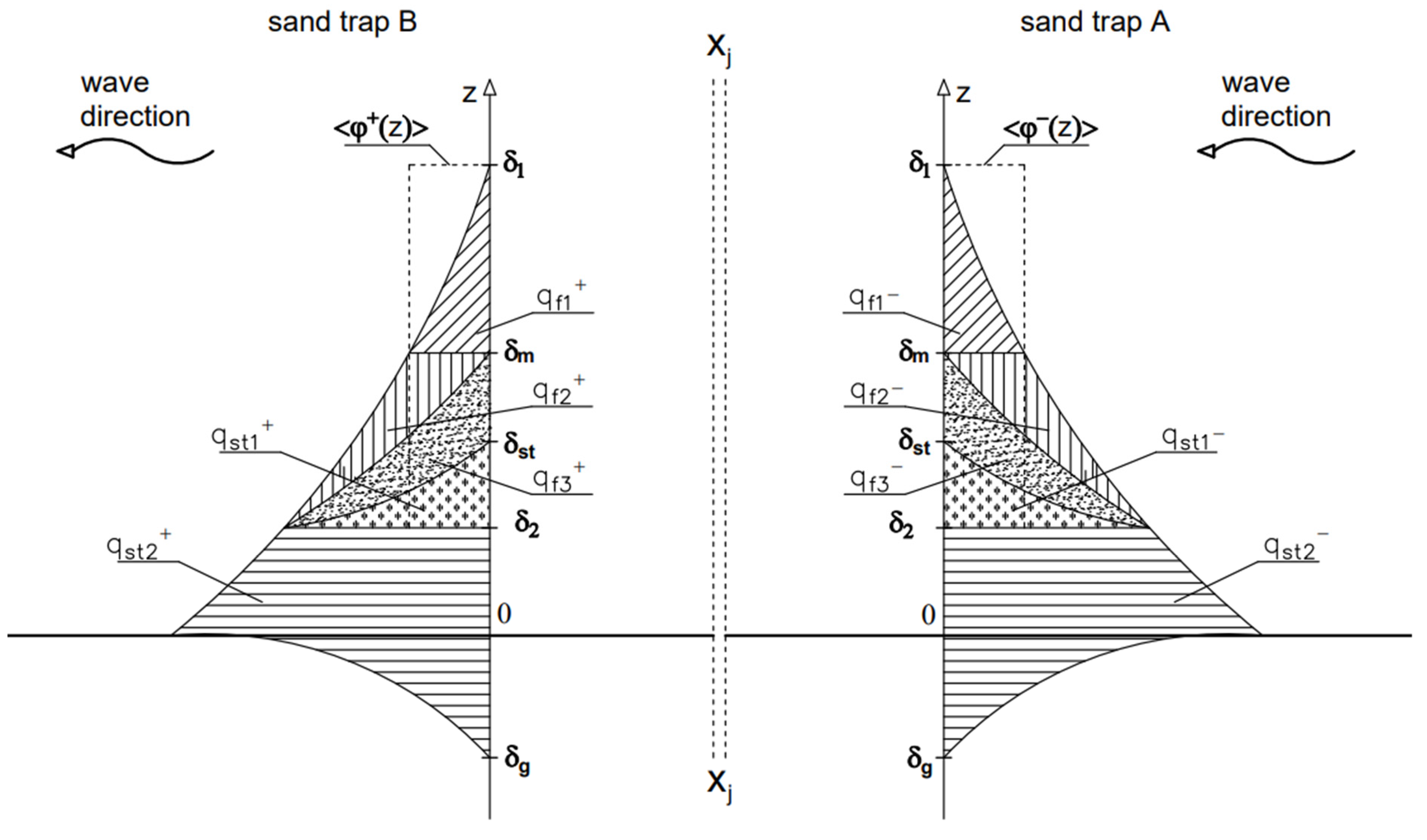

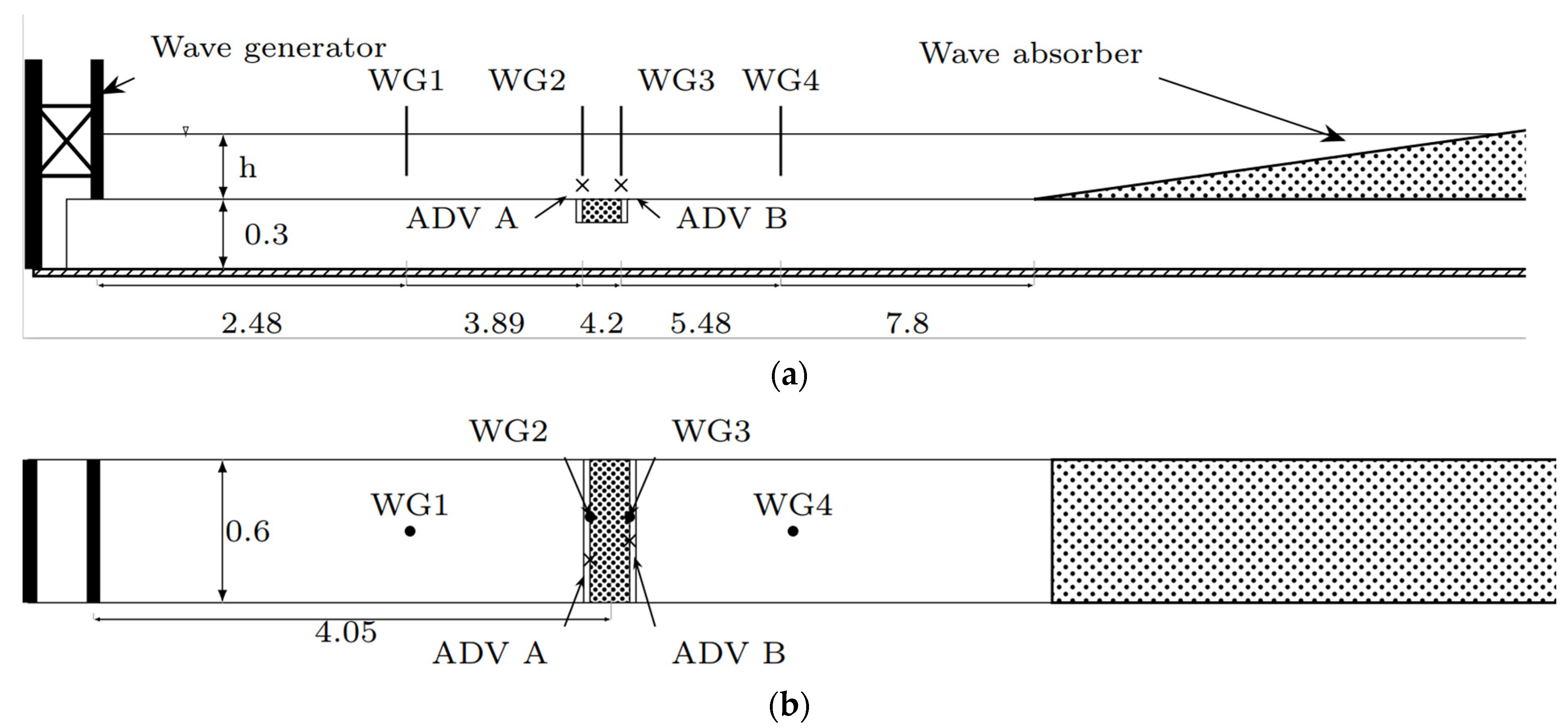
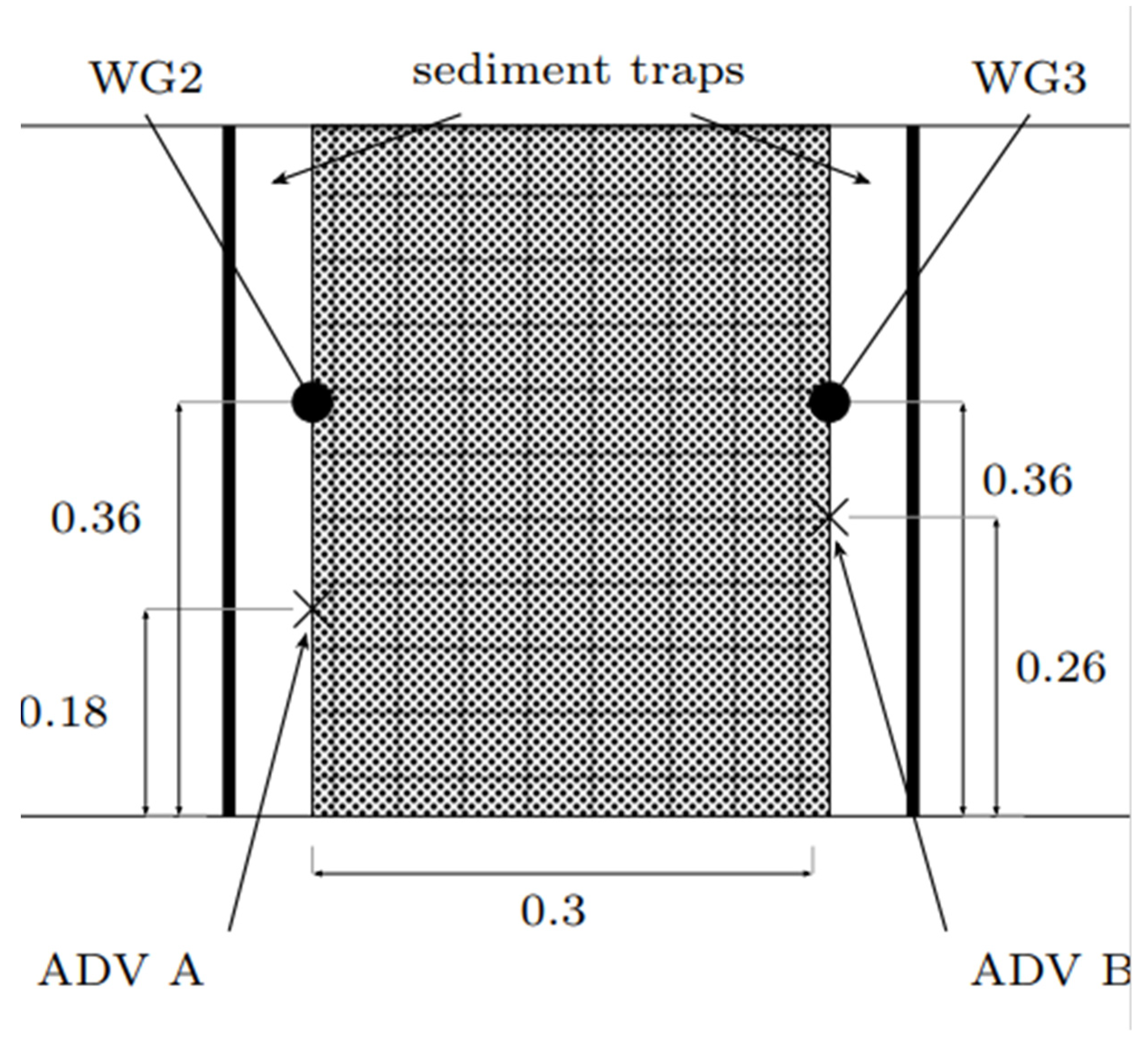
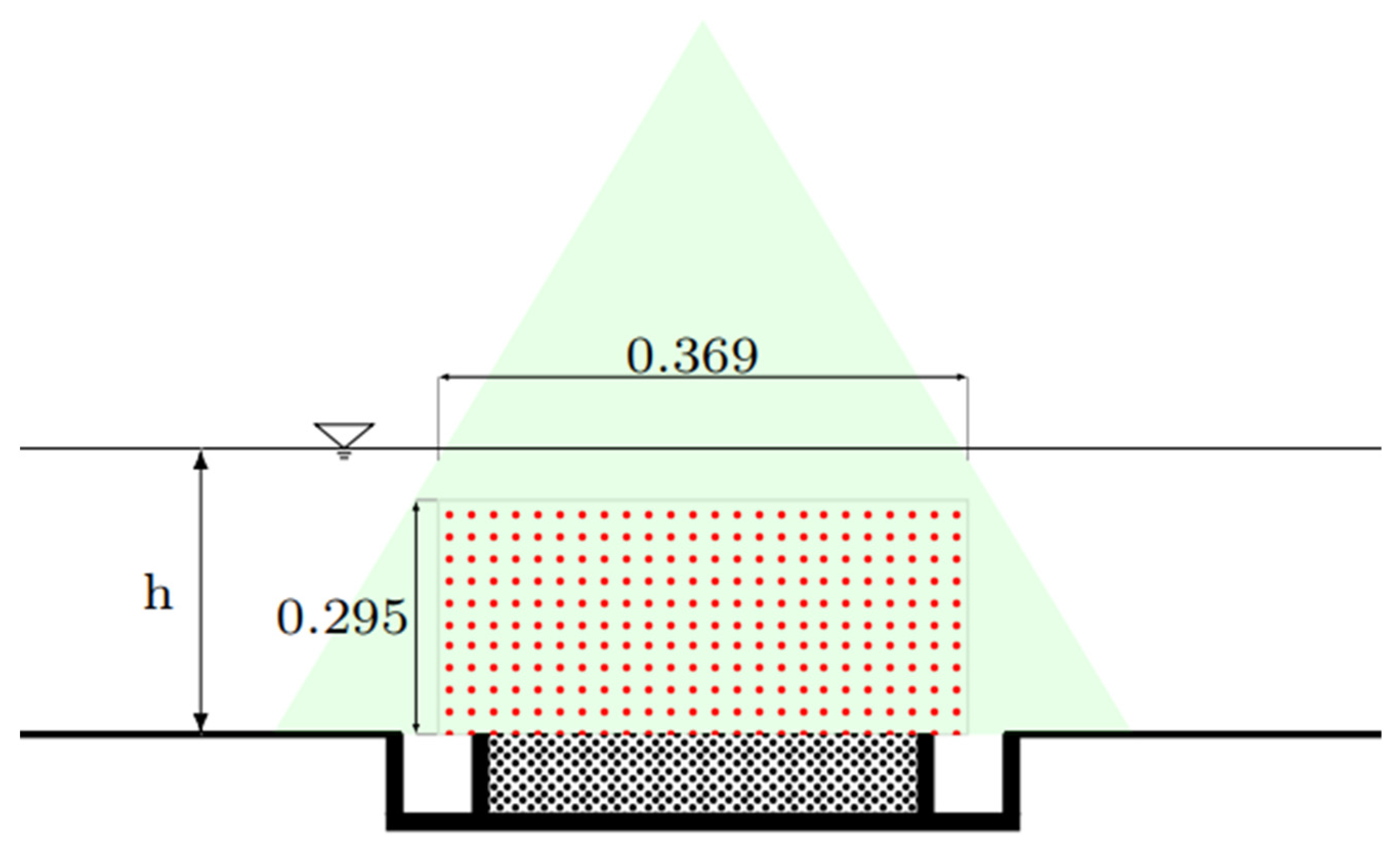
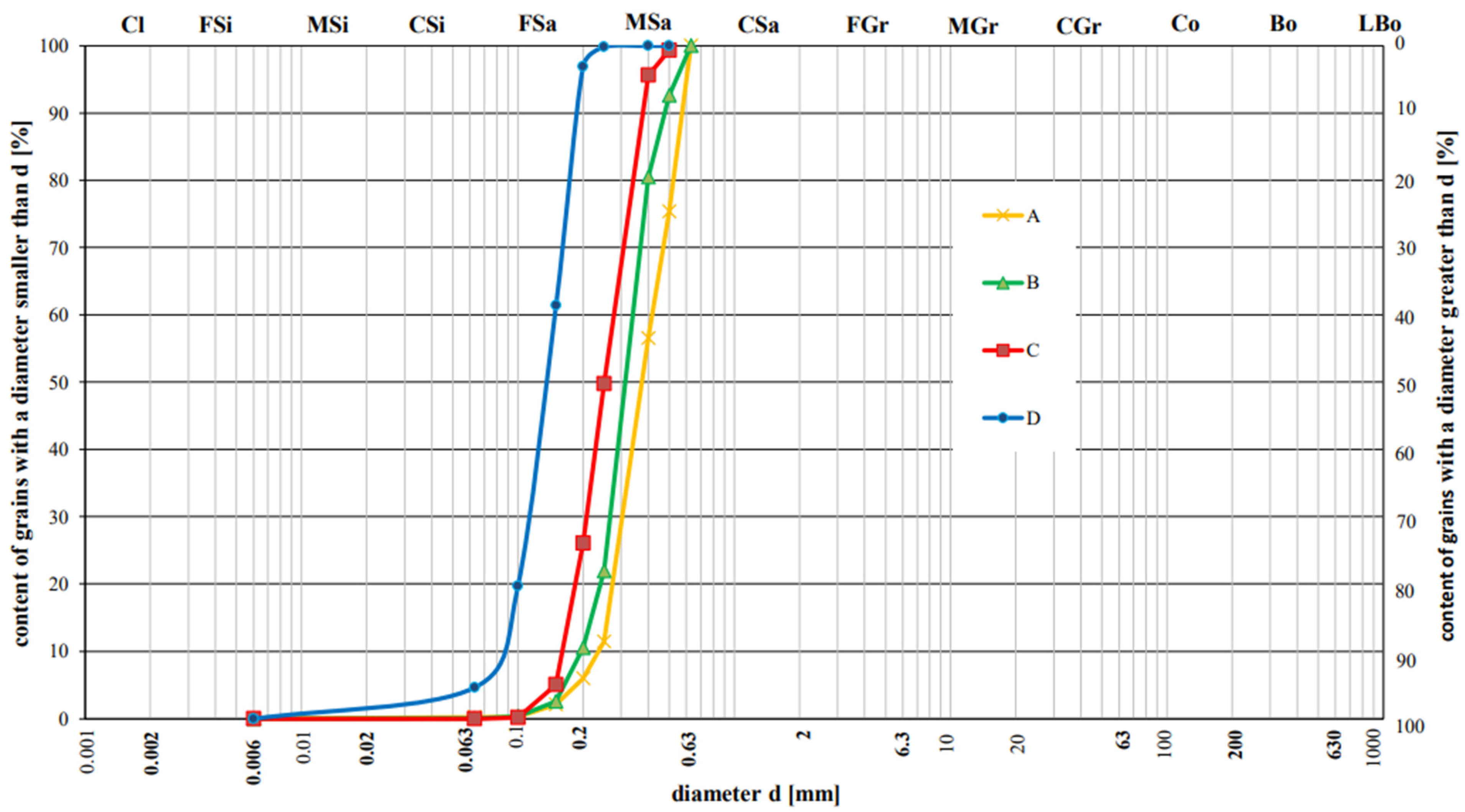
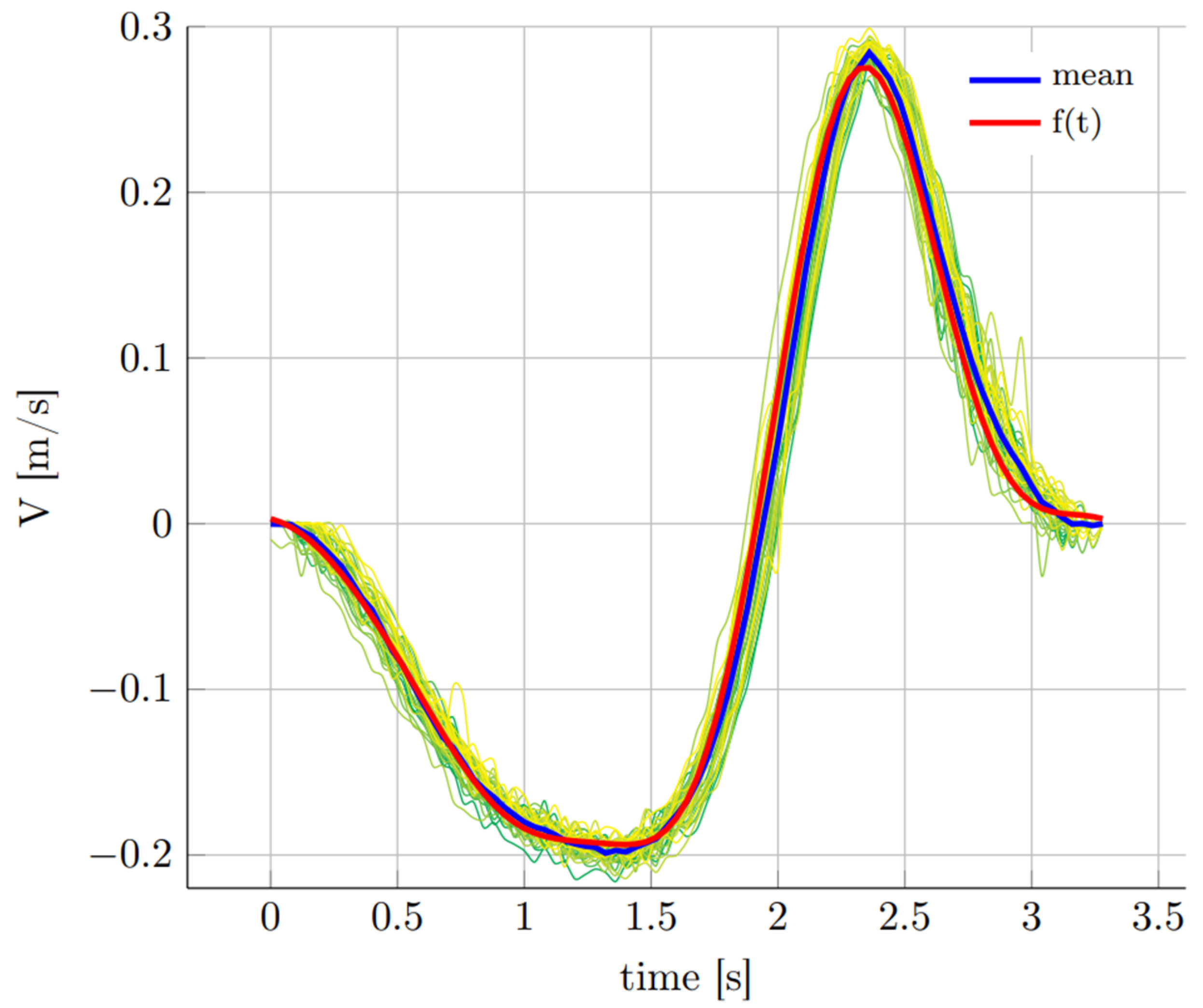
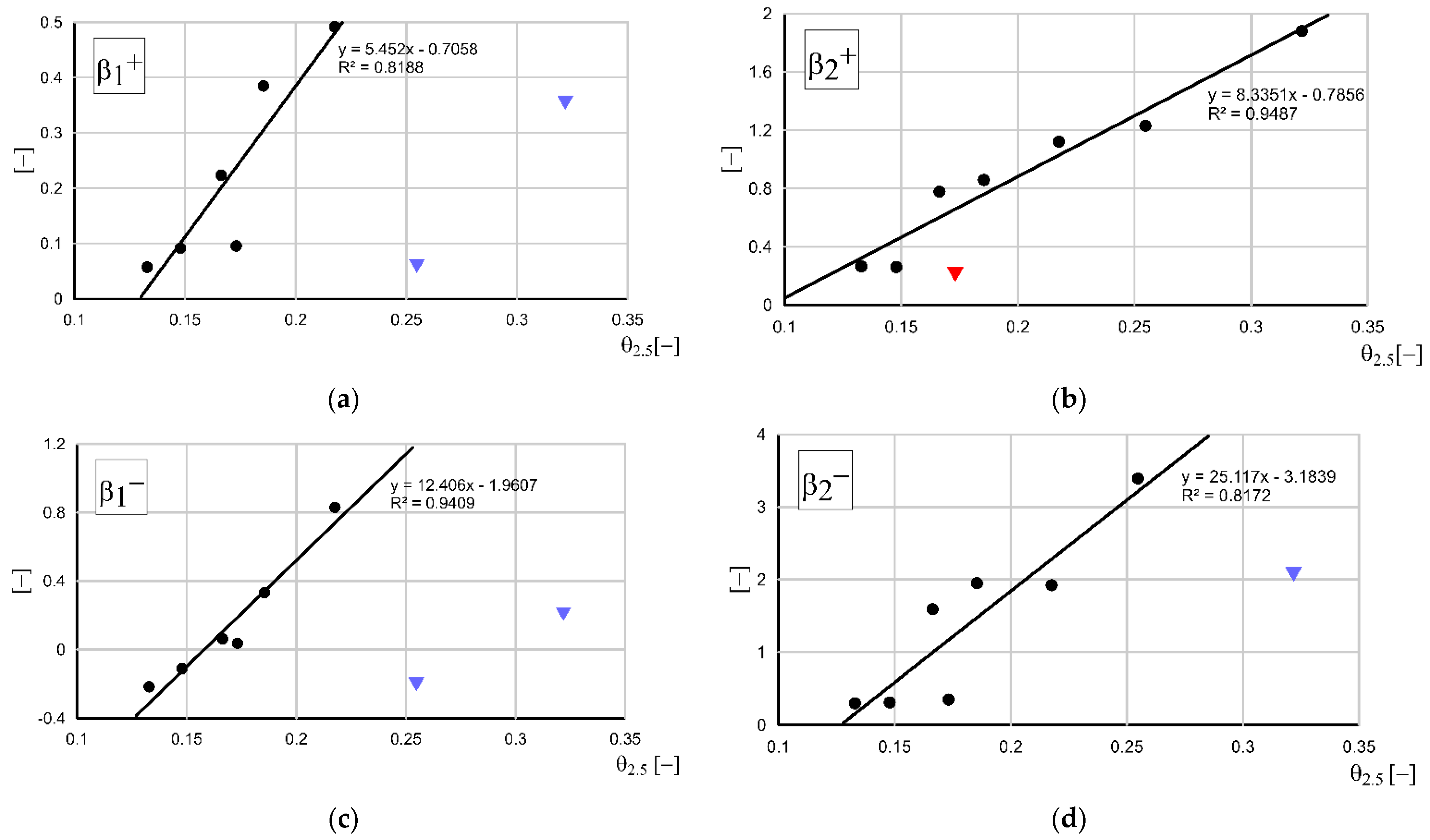
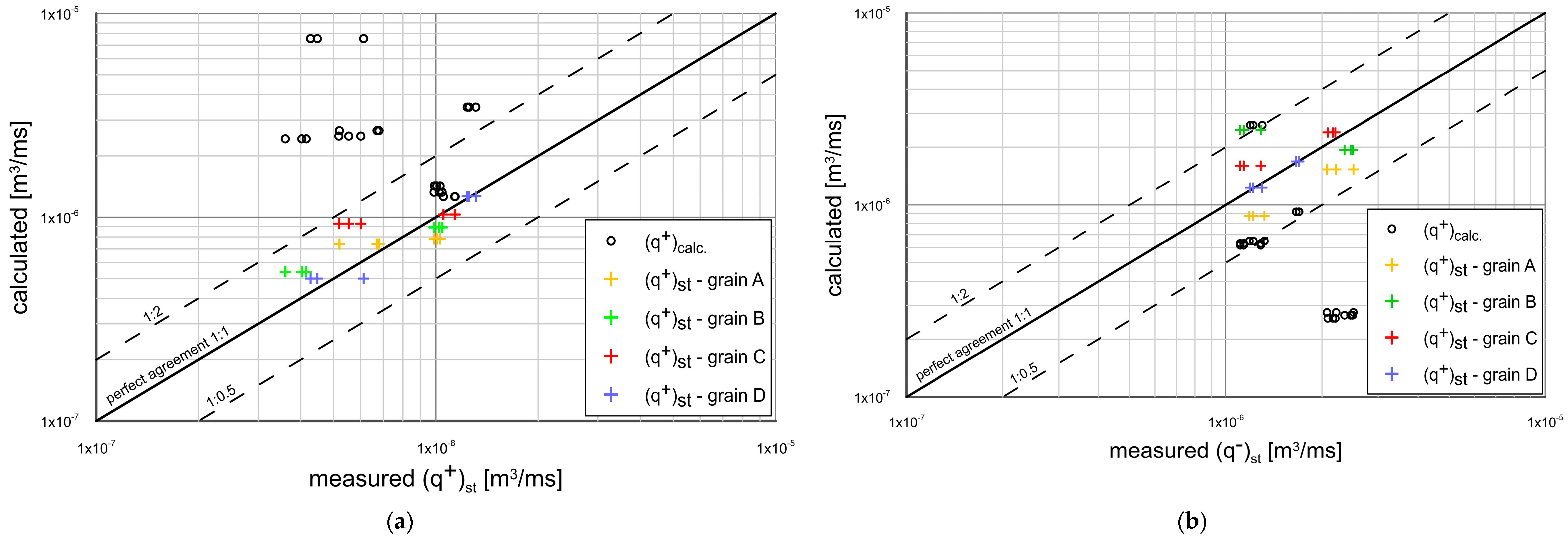
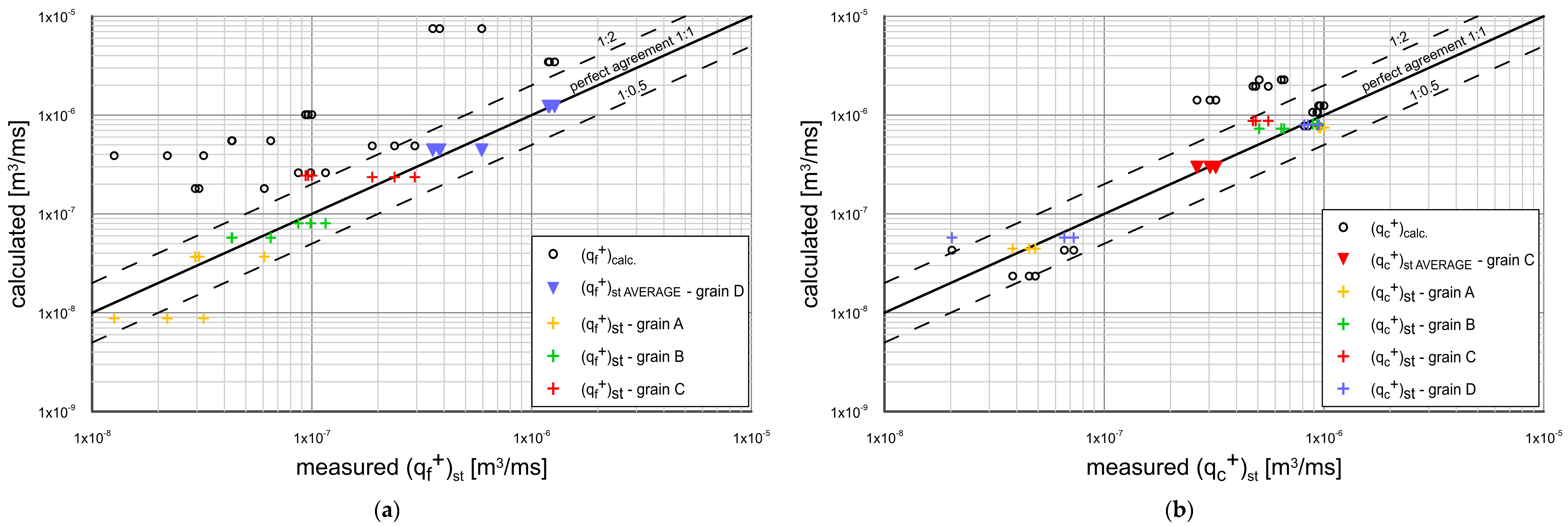
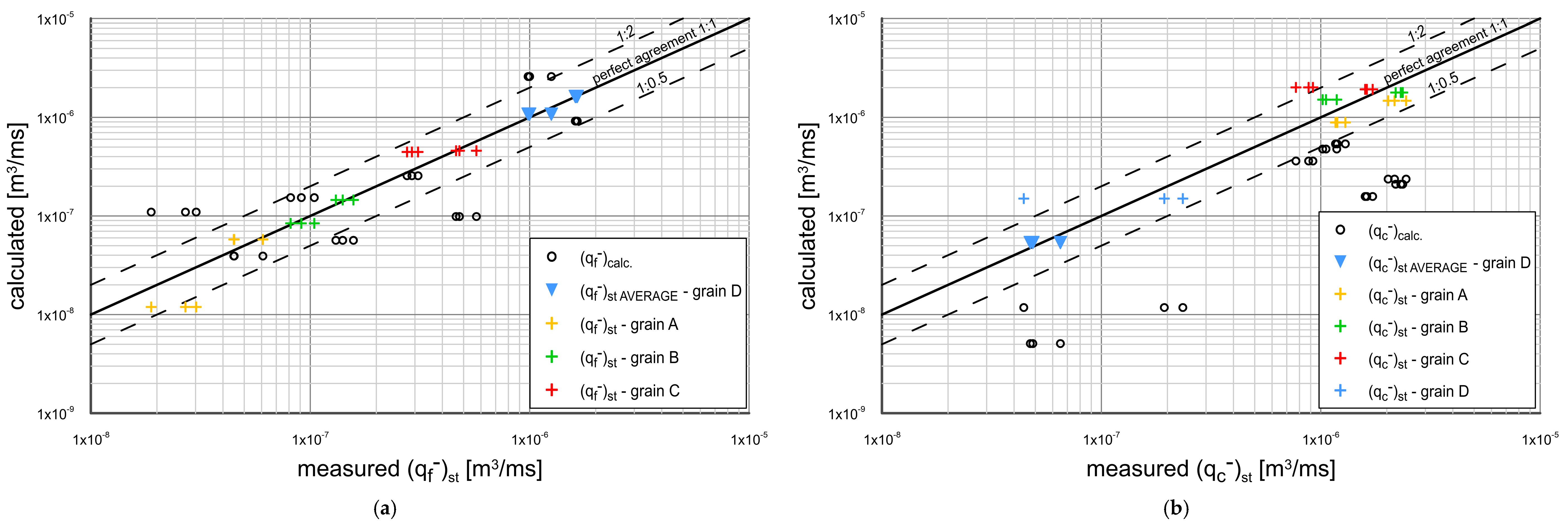
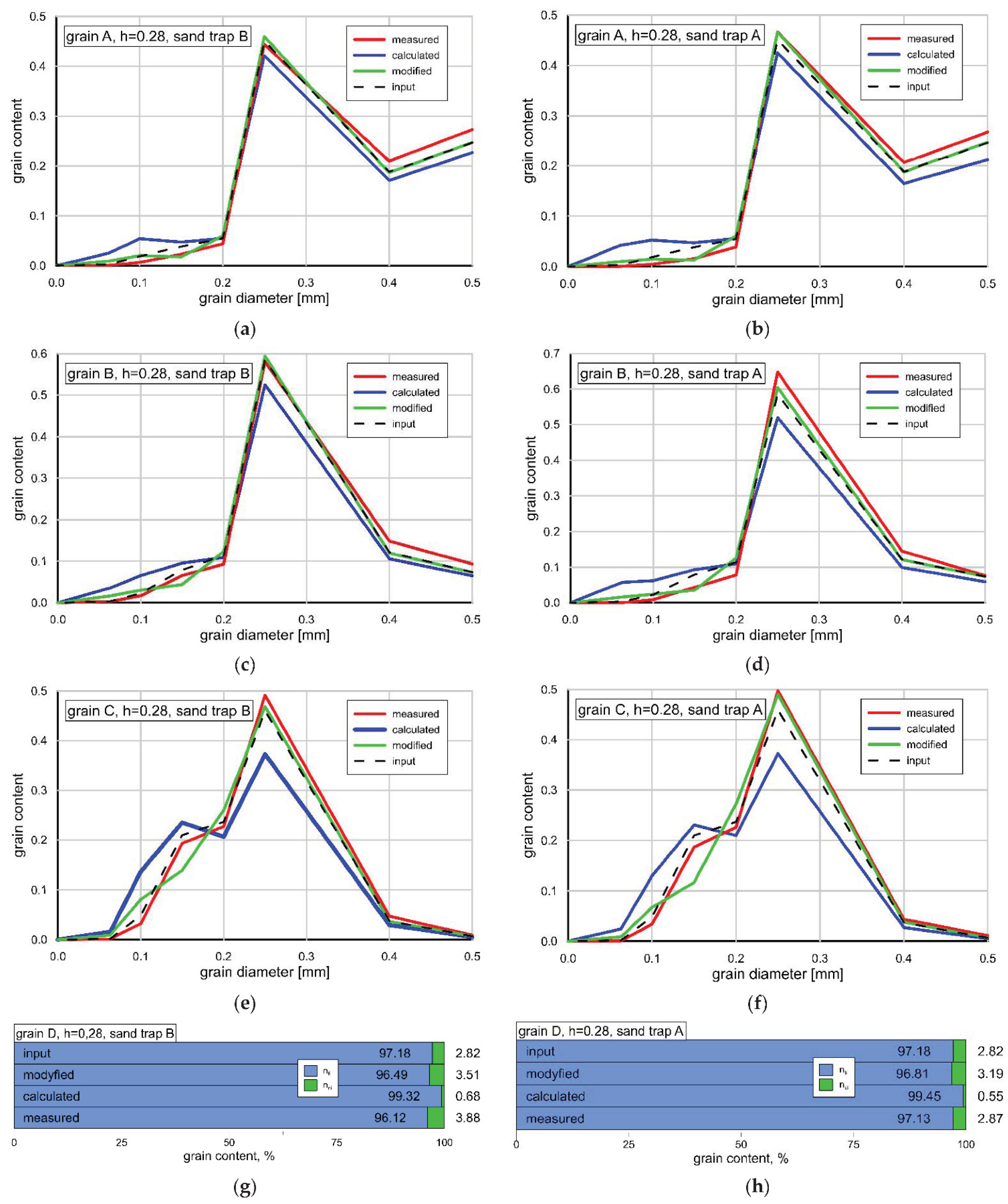
| Parameter | Symbol | Value | Unit |
|---|---|---|---|
| Water depth | h0 | 0.28/0.36 | m |
| Wave height | Hw | 0.12 | m |
| Test duration | Tw | 10 | min |
| Wave peak period | Tp | 3.0 | s |
| Representative diameter of bottom-building sediment grains | d50 | A: 0.38 B: 0.32 C: 0.25 D: 0.14 | mm |
| Sediment density | ρs | 2.62 | g/cm3 |
| Liquid density | ρw | 1.00 | g/cm3 |
| Sediment porosity | np | 0.4 | – |
| Test No. | Sand | h | T | H |
|---|---|---|---|---|
| T0134 | A | 0.28 | 3.0 | 0.12 |
| T0135 | B | 0.28 | 3.0 | 0.12 |
| T0136 | C | 0.28 | 3.0 | 0.12 |
| T0137 | D | 0.28 | 3.0 | 0.12 |
| T0128 | A | 0.36 | 3.0 | 0.12 |
| T0129 | B | 0.36 | 3.0 | 0.12 |
| T0130 | C | 0.36 | 3.0 | 0.12 |
| T0131 | D | 0.36 | 3.0 | 0.12 |
| System Item/Method | Description/Parameters |
|---|---|
| Data Acquisition: | |
| Light source | Dual-head Nd-YAG 532-nm laser, 2 × 50 mJ @ 50 Hz |
| Camera | Imager Pro HS 500 double-frame CCD, 1280 × 1024 @ 520 fps |
| Data Processing: | |
| Vector calculation | Time series of single frames: cross-correlation; multipass with decreasing window size; iterations: - Initial step: 128 × 128 pixel window, single pass, 50% overlap - Final steps: 64 × 64 pixel window, two passes, 75% overlap |
| Options: - Image correction; - High-accuracy mode for final passes; | |
| Masking functions | Geometric mask |
| Type of Sand | d90/d50/d10 |
|---|---|
| A. Coarse quartz sand | 0.58/0.38/0.24 |
| B. Medium quartz sand | 0.48/0.32/0.20 |
| C. Fine quartz sand | 0.38/0.25/0.16 |
| D. Very fine quartz sand | 0.19/0.14/0.08 |
| Test No. | 0.5*a0 | a1 | b1 | a2 | b2 | a3 | b3 | a4 | b4 | ADV |
|---|---|---|---|---|---|---|---|---|---|---|
| T = 3 H = 0.12 H = 0.28 | −0.0182 | 0.0259 | −0.1934 | −0.0414 | 0.0616 | −0.0338 | 0.0137 | −0.0011 | −0.0097 | A |
| −0.0198 | 0.0509 | −0.1758 | −0.0641 | 0.0550 | 0.0342 | 0.0293 | 0.0017 | −0.0110 | B | |
| T = 3 H = 0.12 H = 0.36 | −0.0219 | 0.0148 | −0.1876 | −0.0249 | 0.1035 | 0.0591 | −0.0387 | −0.0305 | −0.0105 | A |
| −0.0241 | −0.0174 | −0.1824 | 0.0257 | 0.0858 | 0.0292 | −0.0602 | −0.0332 | 0.0098 | B |
| δ = 0.5 cm | ||||
|---|---|---|---|---|
| Case | Trough | Crest | ||
| from Sand Trap | to Sand Trap | to Sand Trap | from Sand Trap | |
| Sand A h = 0.36 m | 0.00012 (8.6%) | −0.00020 (4.5%) | 0.00009 (6.9%) | −0.00005 (6.3%) |
| Sand B h = 0.36 m | 0.00018 (3.7%) | −0.00025 (5.6%) | 0.00009 (8.3%) | −0.00006 (9.6%) |
| Sand C h = 0.36 m | 0.00022 (5.2%) | −0.00025 (3.9%) | 0.00007 (13.1%) | −0.00006 (7.1%) |
| Sand A h = 0.28 m | 0.00017 (4.8%) | −0.00028 (6.8%) | 0.00014 (11.1%) | −0.00009 (6.8%) |
| Sand B h = 0.28 m | 0.00010 (14.8%) | −0.00022 (8.9%) | 0.00008 (21.2%) | −0.00009 (8.7%) |
| Sand C h = 0.28 m | 0.00020 (8.1%) | −0.00026 (5.7%) | 0.00006 (16.4%) | −0.00007 (5.3%) |
| δ = 2.0 cm | ||||
| Case | Trough | Crest | ||
| from sand trap | to sand trap | to sand trap | from sand trap | |
| Sand A h = 0.36 m | 0.00067 (7.2%) | −0.00061 (7.0%) | 0.00016 (9.1%) | −0.00026 (7.3%) |
| Sand B h = 0.36 m | 0.00094 (2.5%) | −0.00091 (8.1%) | 0.00020 (10.3%) | −0.00035 (11.2%) |
| Sand C h = 0.36 m | 0.00105 (3.1%) | −0.00091 (5.2%) | 0.00021 (15.2%) | −0.00031 (8.5%) |
| Sand A h = 0.28 m | 0.00102 (4.3%) | −0.00117 (7.6%) | 0.00042 (17.0%) | −0.00049 (8.6%) |
| Sand B h = 0.28 m | 0.00065 (11.7%) | −0.00072 (10.2%) | 0.00024 (24.5%) | −0.00038 (11.4%) |
| Sand C h = 0.28 m | 0.00102 (4.6%) | −0.00112 (7.6%) | 0.00016 (12.6%) | −0.00035 (6.4%) |
Publisher’s Note: MDPI stays neutral with regard to jurisdictional claims in published maps and institutional affiliations. |
© 2022 by the authors. Licensee MDPI, Basel, Switzerland. This article is an open access article distributed under the terms and conditions of the Creative Commons Attribution (CC BY) license (https://creativecommons.org/licenses/by/4.0/).
Share and Cite
Radosz, I.; Zawisza, J.; Biegowski, J.; Paprota, M.; Majewski, D.; Kaczmarek, L.M. An Experimental Study on Progressive and Reverse Fluxes of Sediments with Fine Fractions in Wave Motion. Water 2022, 14, 2397. https://doi.org/10.3390/w14152397
Radosz I, Zawisza J, Biegowski J, Paprota M, Majewski D, Kaczmarek LM. An Experimental Study on Progressive and Reverse Fluxes of Sediments with Fine Fractions in Wave Motion. Water. 2022; 14(15):2397. https://doi.org/10.3390/w14152397
Chicago/Turabian StyleRadosz, Iwona, Jerzy Zawisza, Jarosław Biegowski, Maciej Paprota, Dawid Majewski, and Leszek M. Kaczmarek. 2022. "An Experimental Study on Progressive and Reverse Fluxes of Sediments with Fine Fractions in Wave Motion" Water 14, no. 15: 2397. https://doi.org/10.3390/w14152397






